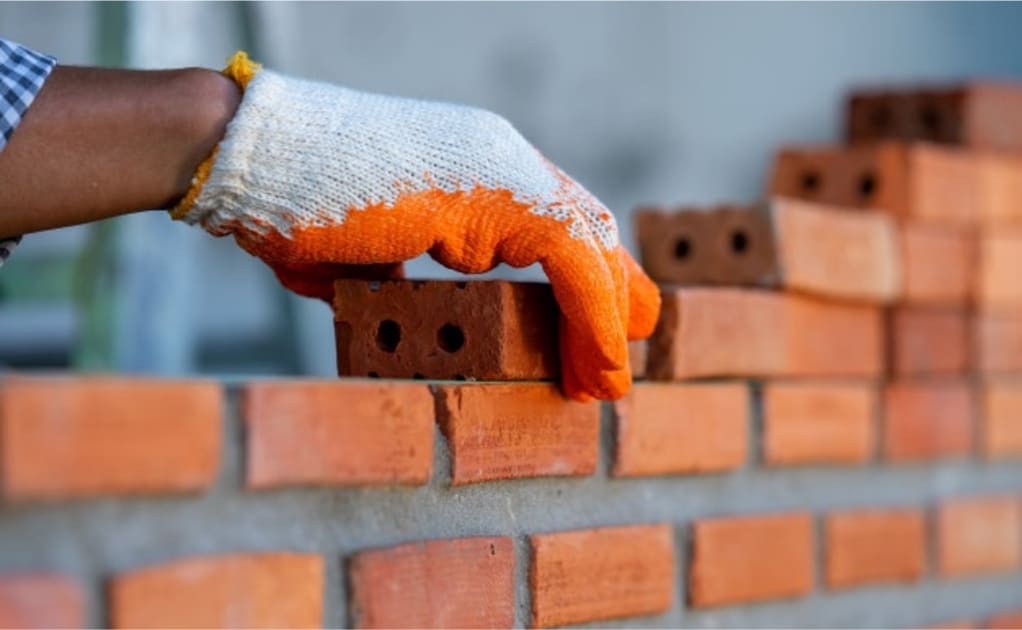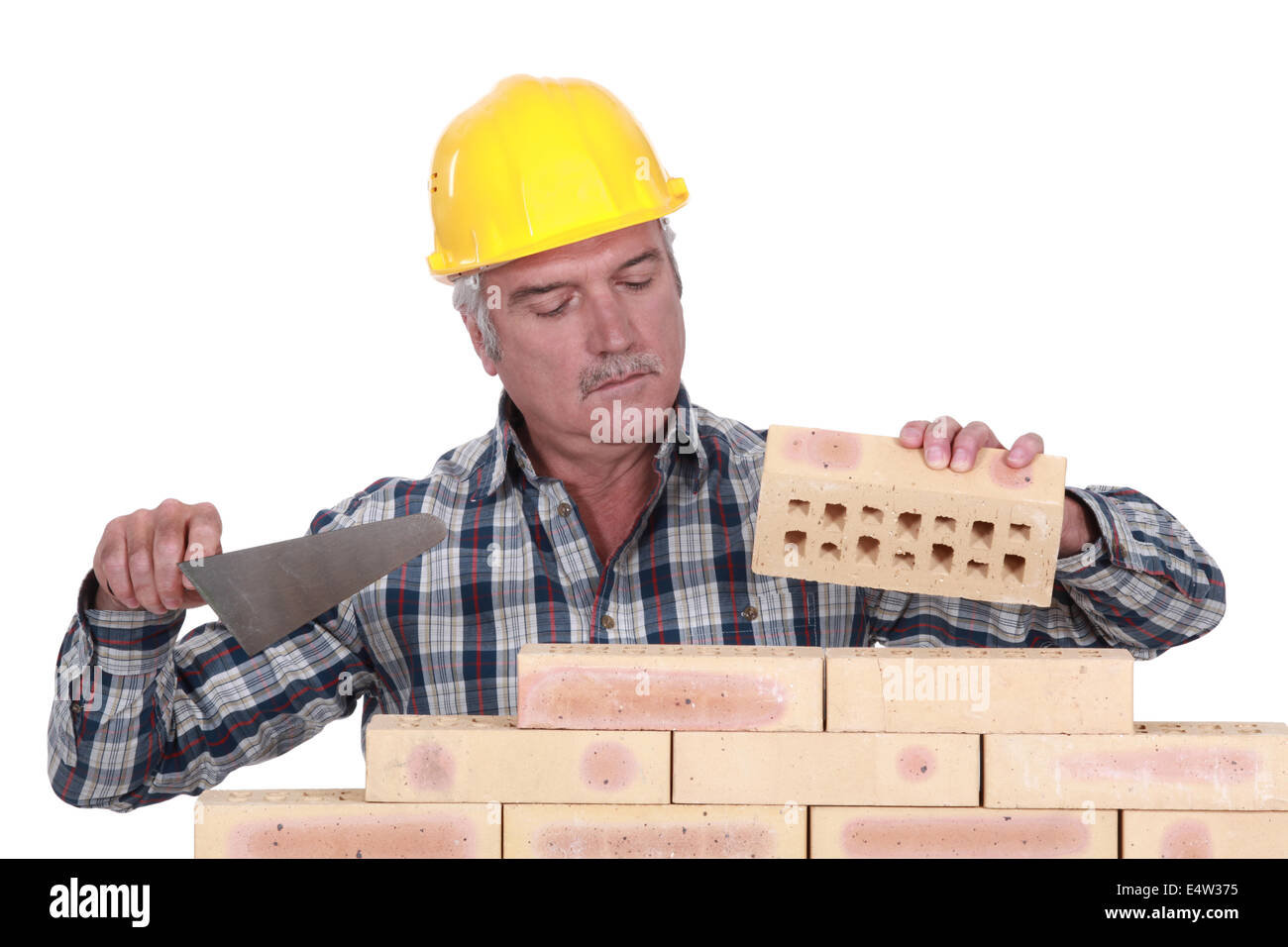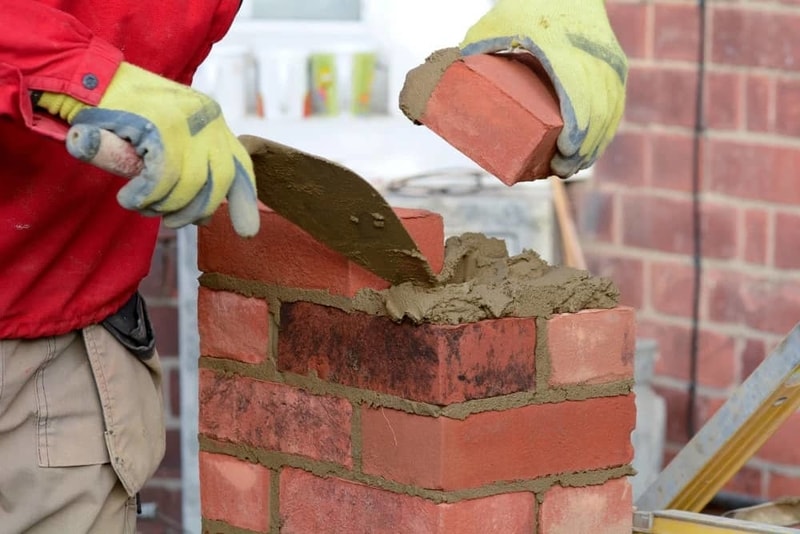The smart Trick of Bricklayer Auckland That Nobody is Talking About
Wiki Article
The Bricklayer Auckland PDFs
Table of ContentsThe Ultimate Guide To Bricklayer AucklandThe smart Trick of Bricklayer Auckland That Nobody is DiscussingThe 10-Second Trick For Bricklayer AucklandGetting The Bricklayer Auckland To WorkThe Single Strategy To Use For Bricklayer AucklandWhat Does Bricklayer Auckland Do?
The scaffolding needed need to be intended prior to the work starts. It needs to be built in such away as to trigger the least disturbance with other team participants. Bricks need to always be piled on slabs; never ever pile them straight on irregular or soft ground. Do not store blocks on scaffolds or paths.Except where piled in sheds, brick heaps should never ever be greater than 7 feet high. When a heap of brick gets to a height of 4 feet, it should be tapered back 1 inch in every foot of elevation over the 4-foot degree. The tops of block piles should be kept degree, as well as the taper should be preserved during unpiling operations.
Architectural bond refers to just how the specific masonry devices interlock or loop into a solitary structural device. You can accomplish architectural bonding of block and also floor tile wall surfaces in among the following three methods: Overlapping (interlocking) the stonework systems. Installing steel incorporate attaching joints. Making use of cement to stick nearby wythes of masonry.
Bricklayer Auckland - Questions
Pattern bond refers to the pattern created by the stonework systems and mortar joints on the face of a wall (Bricklayer Auckland). The pattern may arise from the structural bond, or it might be simply decorative and also unconnected to the architectural bond. Figure 4-4 reveals the 6 fundamental pattern bonds alike usage today.The running bond is the simplest of the six patterns, including all cots. Due to the fact that the bond has no headers, metal connections usually create the structural bond. The running bond is made use of mainly in cavity wall surface construction, brick veneer wall surfaces, as well as facing tile walls made with added wide cot tile.
Excellent bricks must not break down when placed in water. Only when fat lime or clay mortar is utilized or when one is forced to utilize bricks that are not well charred, this saturating guideline has actually to be unwinded.
Some Of Bricklayer Auckland
In all instances, blocks must not be taken care of in baskets or in any type of various other mode which will ruin the intensity of their edges. How do you construct a masonry wall surface? The procedure of bricklaying in normal basic work is as adheres to. A layer of mortar is spread out to cover the complete size of the wall for an ideal size of the lower program.
We press the side protruding mortar in strongly to be webpage degree with the face of the wall surface if it is to be left unplastered. In the usual practice adopted by several masons, a row of bricks is first positioned on a thin layer of bed mortar leaving the cross joints vacant.


Purely this is not a good method. (Nevertheless, when making use of cement mortar of high stamina, the loss of strength because of offense of these policies might be just limited.)The walls are raised really plumb. All training courses are laid absolutely straight and all vertical joints really upright. Upright joints in alternate programs must come straight, one over the other.
Unknown Facts About Bricklayer Auckland
For this objective, a wood straight side with college graduation providing a density of each brick training course including joint can be utilized for guidance. For a thick wall, the above procedure is duplicated along with both faces of the wall and the interior filling blocks for the thick wall surface are laid in a comparable way.
This operation of loading open joints is described flushing-up. It is incorrectly left out for several courses on some badly-executed work and just done afterwards (not after every program) in an ineffective way. It is not a good practice and also needs to be avoided as it is essential that every training course ought to be flushed approximately the level if great is needed.

Unknown Facts About Bricklayer Auckland
The mortar rising and also loading the upright joints completely and also creates an exceptionally strong pop over to this web-site as well as solid wall surface. This is understood as larrying. For a rat trap bond work (as in the building of dental caries wall surfaces), if the mortar is put carelessly on the brick, several of it will drop right into the cavities and also will be thrown away.The face of the brickwork will likewise be cleaned of all mortar droppings, etc(ii) When situations provide it essential to carry on a section of a building in uneven programs, the work will be developed back (according to the bond made use of on the work) at an angle not steeper than 45 levels so regarding ensure an attire as well as effective bonding.
Or else, for faces to be smudged, completing of the face joints should be accomplished as reviewed in below (This is really essential.)(iv) The walls need to be consistently elevated around not leaving any type of component one metre (3 feet) reduced than the other - Bricklayer Auckland. A day's job ought to not be more than 1.
Some Ideas on Bricklayer Auckland You Should Know
When the facework is to be later plastered or the look at this website joints alone are to be sharp, the joints should be raked while the wall is being developed. Bricklayer Auckland. It should be raked to a minimum depth of 12 mm by a raking tool during the progression of the job itself, when the mortar is still eco-friendly.
If plastering or aiming is not envisaged, the joints need to be struck flush and finished at the time of laying itself, as already mentioned. Half-brick walls have a tendency to break unless treatment is taken in its construction. Brickwork in half-brick masonry is to be brought out with stretchers in 1: 5 mortar.
Report this wiki page